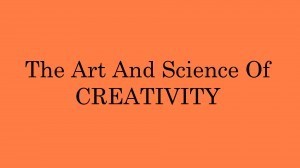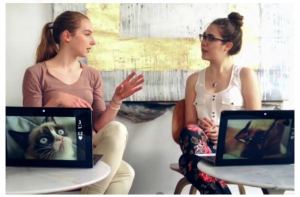Susan M. Weinschenk's Blog, page 34
July 15, 2014
5 Myths of Lean UX
Today I gave a webinar on the topic of 5 Myths of Lean UX. I’ve created a slideshare from the webinar. If you are interested in what Lean UX is and isn’t, then you might want to check out the slideshare.
If you’d like more information on Lean UX check out our Lean UX one day workshop.
May 16, 2014
Top 10 Favorite UX And Usability Books
It’s been over a year since I wrote my last Top 10 book list for Usability and UX, so I decided it’s time to update the list.
Since I’m limiting the list here to 10, chances are high you have a favorite that I’ve not included. Let me know what your favorites are in the comments.
I have an Amazon affiliate account, so I’ve linked to the books on Amazon if you are interested in purchasing, or even just getting more info.
The list below is in no particular order:
1. Don’t Make Me Think by Steve Krug. This is a newer edition of the book. Steve is such a great writer (and an all round great guy!). He has a way of cutting through all the chatter and clutter and bringing out the essence of a topic. If you are going to get one book for your team to introduce them to human-centered design thinking, then this should be the book.
2. Rocket Surgery Made Easy by Steve Krug is the other necessary book if you are doing usability testing. And you ARE doing usability testing, right? This book will teach you everything you need to know about how to plan and conduct a user test of your product.
3. Forms That Work by Caroline Jarrett and Gerry Gaffney. If you are designing anything that has a form: a web page, web app, software application, mobile app, or even a paper form, you must read this book. It’s practical and also conceptual — my favorite book on form design.
4. The User Experience Team of One by Leah Buley. I don’t agree with this title. Because this is a great book even if you are a UX team of 10! This is the best book I’ve found that walks you through processes, deliverables, and what you need to do in a very clear and readable way. Not ponderous. A really hands-on book.
<
5. Communicating the User Experience: A Practical Guide for Creating Useful UX Documentation by Richard Caddick and Steve Cable. In an era where many are calling for “lean UX”, and the end of the formal deliverable, I am going to be so bold as to say that there are many times and situations when you should create deliverables for communicating your user experience work, and luckily this book will show you how to do that. It’s practical and innovative at the same time. A must-read for practitioners who have to create deliverables for their projects.
6. Smashing UX Design: Foundations for designing online user experiences by Jesmond Allen and James Chudley. This book has everything. It will walk you through the idea of user centered design, teach you the details of how to do everything (stakeholder research, user research, wireframing, prototyping, user test, etc etc,) and then will show you how they did it with case studies. A great book for the UX practitioner, whether new or experienced.
7. Client Centric Web Design by Paul Boag. Have you ever had your design or UX project blow up? Misunderstandings with clients? Then you need to read this book. Paul takes the point of view of the client, not just the user. This book has critical advice for anyone who works on web design/UX design projects for clients. Unless you are only designing your own personal website, you need to read this book. It’s not available on Amazon, just through his site.
8. Measuring the User Experience by Tom Tullis and Bill Albert. Need metrics? Need numbers to back up your impressions? This is the go to book for everything measurable about the user experience. Really thorough and detailed.
9. Quantifying the User Experience: Practical statistics for user research by Jeff Sauro and James Lewis. The word “statistics” scares a lot of people. I love statistics, but I understand that many others don’t. Whether you love ‘em or not, you should read this book. If you are friends with stats then you’ll enjoy the book. And if you’re not you really NEED to read it! Don’t be afraid. Jeff Sauro is a master at getting people to understand the why and how of stats for user experience.
10. Lean UX by Jeff Gothelf and Josh Seiden. I have a lot to say about Lean UX. I’m a fan, but I also think there are misconceptions about what it means, where it comes from, how it’s different from “not lean” UX. I’ll leave you find out all my opinions in my Lean UX Workshop course! Let’s just say you should know about Lean UX.
and one more bonus book: I hope you forgive me, but I’m going to recommend my own book: 100 Things Every Designer Needs To Know About People.
Which makes 11!
(You might also be interested in my top 10 Psychology books to read.)
What are your favorites?
May 15, 2014
Obstacles To User Experience Success
Have you ever been the User Experience point person on a product team and found yourself explaining over and over again what it is you are actually doing? Working with a team that doesn’t “get” user experience is one of the obstacles to creating a great user experience.
I talk about that obstacle plus a few more, as well as what to do about them, in this video. It’s one lesson in my latest course course called “An Introduction To User Experience”. And the entire course is FREE.
Even if you are an experienced UX professional you might enjoy this video and the whole course.
In the video I talk about three obstacles:
Working with a team that doesn’t “get” what UX is
Being a UX team of One
Not having a high level advocate in the organization
What do you think? Have you experienced these obstacles? More? Others?
If you know someone who needs to learn about UX, what it is and why it’s important, point them to the free course on our TeamW Courses page!
April 23, 2014
Why I’m Still In Love With User Testing
I’ve been doing user testing for (I’m afraid to admit) decades. And I still love it. It’s a great way to get feedback from people about how effective your design, your product, your assumptions are.
In these days of Lean everything you can’t beat user testing as one of the best Lean UX techniques to test your assumptions.
Here’s a short video on Why You Need To Do User Testing. It’s the first lesson in our newest online video course on User Testing.
Do you know someone who needs to see this video?!
April 17, 2014
365 Ways To Persuade And Motivate: #15-24
For this post I’ve put 10 ways to persuade and motivate altogether in one post!
15. Talk first – Research shows that people like to follow a leader and that the person who talks first when a group gets together becomes the leader.
16. Give a gift – When someone gives you a gift you feel indebted and will likely want to give something in return. If you want to increase the likelihood that someone will do something, give them a gift first, and then ask for what you want/need. Whether a website give away, free trial subscription or free eBook include an informative video – give away something of value before asking for people to sign up or make a purchase.
17. Ask for more than what you need/want – Research shows that people are more likely to say yes to your request if you ask for something larger than what you really want first. When your initial request is denied, come back with a smaller one (the one you really wanted). Not only will they be more likely to say yes, they will be more committed to following through if it is a second request.
18. Use nouns - When you use a noun it evokes group identity. People are more likely to take an action when they feel part of a group. For example, instead of having a button on your website that says “Donate Now,” phrase it as “Be A Donor.” Instead of “Join Now” use “Be A Member.”
19. Say how many other people are doing it – Research shows that we look to what other people are doing to decide what we should do. If we think a lot of people are doing something we are more likely to do it too. Especially if the situation is ambiguous or uncertain. Make reference to how many people have already taken the desired action. “Over 2,500 people have already downloaded the e-book.”
20. Model the behavior – Mirror neurons in our brain make us likely to imitate what others are doing. Show someone else taking the same action. For example, have a video that shows someone filling out the form on the website and pressing the “Sign Me Up” button.
21. Imitate others’ body gestures – In a face-to-face interaction imitate what other people are doing. If they sit back, you should sit back. If they put their hands on the table, put your hands on the table. Research shows that people that imitated the other person’s body language were rated as being more likable and were more persuasive.
22. Be passionate and excited about your idea – Emotions are contagious. If you are passionate and excited about your idea it will be conveyed through your voice and body language and others will become passionate and excited too.
23. Use strong emotions (positive or negative) – If you want something to go viral then use strong emotions. Messages or ideas that include strong emotions go viral more than messages without emotions. It doesn’t even matter if the emotion is positive or negative. Just showing strong emotions inspires people to act.
24. Synchronous behavior – If you want to bond a group have them do something together and preferably something rhythmic. When we engage in rhythmic behavior as a group (singing, drumming, dancing), the neurochemical oxytocin is released. Oxytocin makes us feel a sense of bonding with those around us.
What do you think? Have you used any of these 10?
For more information check out my books, or better yet, sign up for one of our in-person or online video courses.
March 5, 2014
The Brain Science Of Why Stepping Away Increases Creativity

We’ve all had the experience: You’re trying to solve a problem or come up with a new idea. You’ve been sitting at your desk, or discussing it in meetings, but you haven’t come up with a solution or the right idea. Then you step away — go for a walk, go to lunch, weed the garden, wash the dishes, or go to sleep. And then, suddenly you get an “a ha” moment and the answer or new idea comes to you in a flash. Why does that happen?
It has to do with how your brain works. The prefrontal cortex (PFC) is in the front of your head (think forehead). The role of the PFC (among many things) is to concentrate on the task at hand, as well as to go searching for existing information you have stored in memory, and combine it with other existing information you have stored. It is this searching and combining of the PFC that allows you to solve problems and come up with new and novel ideas. Here’s the rub — If you keep your PFC too focused on the “task at hand” then it can’t go searching for interesting combinations of information you have stored in memory. When you take a break (the walk, the garden, the shower, the dishes) then your PFC is freed up to go searching and combining. So if you need to solve a problem or want a new idea, let your PFC know what you want to solve and then take a step away and take a break!
What do you think? Have you experienced the power of stepping away?
Want more information like this? Then check out our two Creativity courses. One is an online video course and the other is an in-person workshop on April 9 in Chicago IL.
February 25, 2014
The Art & Science Of Creativity
 I’m really excited to announce that my newest online video course, The Art And Science Of Creativity is now live on Udemy.
I’m really excited to announce that my newest online video course, The Art And Science Of Creativity is now live on Udemy.
How many times have you heard that certain people are just “born creative,” and certain people “aren’t.” It’s not true. Creativity is a process with clearly defined steps that you can learn and apply towards ANY project. Using techniques taken from brain science to rocket science, you’ll learn that everyone, including you, is born creative. If you think of yourself as creative already, this course will make you more efficient and productive with your creativity. If you think of yourself as one of the “not creative” people, this class will show you that you ARE creative, and how to bring that creativity to fruition.
The course teaches a creative process: from coming up with an initial idea, unpacking and expanding upon it, to shaping and refining it, the seven key principles of creativity – principles that apply whether you are working by yourself or as part of a team, the common roadblocks to creativity, and the remedies to get you through these roadblocks if and when they occur, so you can move forward on your project.
And in the course we talk about the brain science of the unconscious, how it applies to creativity, and how to give your brain the right data it needs to figure out the problem or next course of action, even when you are not consciously working on it.
Here’s the opening lesson:
Go to the Udemy page for more information, to register for the course, or preview more videos.
We are offering a special price ($89, more than 50% off) if you register by March 3, 2014 and use the coupon code: VIPEntry
Instead of teaching this one by myself, I’ve got a co-instructor, Sam Spitzer. Sam is a rocket scientist, inventor, and composer. He’s very creative! I think you will enjoy learning from the two of us together.
February 16, 2014
365 Ways To Persuade And Motivate: #14 – Think Social
 People are social animals. It’s in our biology. We just can’t help it. So if you want to persuade and motivate people to take action, put whatever you want them to do in a social context. Do you want people to use your product? Then make sure they know how many other people are using it. Do you want people to use your product more? Then get them to tell others about the product. By talking about it to their social network they are reinforcing to themselves how important it is to them (if you’ve talked about something to your network then you are more likely to be committed to it moving forward). If you want people to use your product more, then make it easy to use it with other people around; make it easy to use it together with someone else — make it an app that two people use, or that one person uses but wants to share what happened. Make it easy to share.
People are social animals. It’s in our biology. We just can’t help it. So if you want to persuade and motivate people to take action, put whatever you want them to do in a social context. Do you want people to use your product? Then make sure they know how many other people are using it. Do you want people to use your product more? Then get them to tell others about the product. By talking about it to their social network they are reinforcing to themselves how important it is to them (if you’ve talked about something to your network then you are more likely to be committed to it moving forward). If you want people to use your product more, then make it easy to use it with other people around; make it easy to use it together with someone else — make it an app that two people use, or that one person uses but wants to share what happened. Make it easy to share.
In some recent research for a client an online customer I was interviewing talked about going online to the customer’s site with her daughter and having mother/daughter bonding time while shopping online together. How many online shopping sites make it easy to shop together? What about a shopping experience and a shopping cart that allows and encourages two or more people to shop at the same time? On different devices? Even if they are in the same room.
How many times have you and a friend been online at the same site at the same time while in the same room and talking about what you are doing?
Intel’s experimenting with Billboard. It puts a 2nd screen on the outside of your laptop that you can use to show pictures, or even show your texts with other people around you. What if you could mirror what you are doing online if you so chose, so that the person sitting across from you could see what you were doing without you having to move your chair or having them turn their laptop to let you see?
How can you use the power of social interaction to persuade and motivate?
January 8, 2014
365 Ways To Persuade And Motivate: #13–Talk to the unconscious
 “We want them to type in their email and click on the “Join” button”, was the response from my client as I asked him what was the one action he wanted people to take on his landing page. Good. That was clear. But now the question was what else should be on the landing page to persuade people to click.
“We want them to type in their email and click on the “Join” button”, was the response from my client as I asked him what was the one action he wanted people to take on his landing page. Good. That was clear. But now the question was what else should be on the landing page to persuade people to click.
Like most of my clients the landing page was filled with lots of reasons why the visitor should click and join, but almost all of those reasons were “logical”, and most were about price. The people coming to the landing page didn’t have a relationship with this company yet — it was unlikely they would click and join based on a few weak logical arguments.
I started asking questions:
“What are your potential customers afraid of?”
“What makes them mad or frustrated?”
“Do they feel taken advantage of?”
“How could they feel like they were a hero?”
Silence. My client was ready to tell me all the features and benefits that his service would provide, but he didn’t really know about the emotional state of his potential customers.
That’s not uncommon. In my experience, many teams bringing new products and services to market know only the barest of information about their customers and potential customers, and rarely have done actual audience research on the unconscious needs, emotions, and feelings of their target audience.
Which means that their landing pages, marketing campaigns and advertising are hit and miss at best.
Research in psychology over the past several years shows us clearly that most mental processing occurs unconsciously. Most of the decisions we make are fueled by our unconscious. It is only after we’ve decided to act that we figure out a conscious, logical reason for why we did what we did. We use that conscious logical reason to explain our decisions and actions to ourselves and others, so it’s important to provide those logical reasons. But if you really want to persuade and motivate someone to take action you have to talk to the unconscious. The unconscious understands things like:
fear
loss
sex
food
love
belonging
being a hero
danger
challenge
mastery
The unconscious pays attention to words if they are short and evoke feelings. But it pays much more attention to pictures, music, and moving images (i.e. video).
If you want to persuade and motivate people to take action you need to know what they are afraid of, afraid of losing, how they feel they can “save” the day, and/or what will make them feel loved or part of the group. Then you need to use some of those ideas in your words, headlines, and have pictures, video, and music that matches. If you want to persuade and motivate people you have to talk to the unconscious.
What do you think? Do you know the unconscious factors and messages that persuade and motivate your target audience?
If you would like to learn more about the research on unconscious mental processing, I recommend:
Strangers to Ourselves: The Adaptive Unconscious by Timothy Wilson
or my book, How To Get People To Do Stuff
and consider attending my seminar on The Science of Persuasion.
December 28, 2013
365 Ways To Persuade And Motivate: #12 – Give them a warm beverage
You have an important meeting with a client first thing tomorrow morning. The main contact, Jeremy, is unhappy with some of the deliverables on the last project. He has been a little cold and distant with you on the phone and through email recently. This is the first time he is coming in to the office in a while, and you want to try and break the ice.
According to Joshua Ackerman you should take a somewhat literal interpretation of the idea of breaking the ice. You should try to warm him up by offering him a warm coffee or tea. Use a cup or mug where he can feel the heat through his hands, and, ideally, see if you can get him to hold the beverage while you talk to him.
According to Ackerman’s research this will not only thaw out his hands, but will also make him warm up towards you. When people hold a warm cup then they feel that the person or people they are interacting with have a warmer personality. It’s called “haptic sensations” or “embodied cognition”.
Conversely, DON’T offer Jeremy a cold can of soda or ice water. That will make him judge you as having a cold personality.
Here’s the research:
Ackerman, Joshua M., Christopher Nocera, and John Bargh. 2010. “Incidental haptic sensations influence social judgments and decisions.” Science 328(5986): 1712–15. doi: 10.1126/science.1189993.
To learn more check out our 1 day seminar on The Science of Persuasion.




